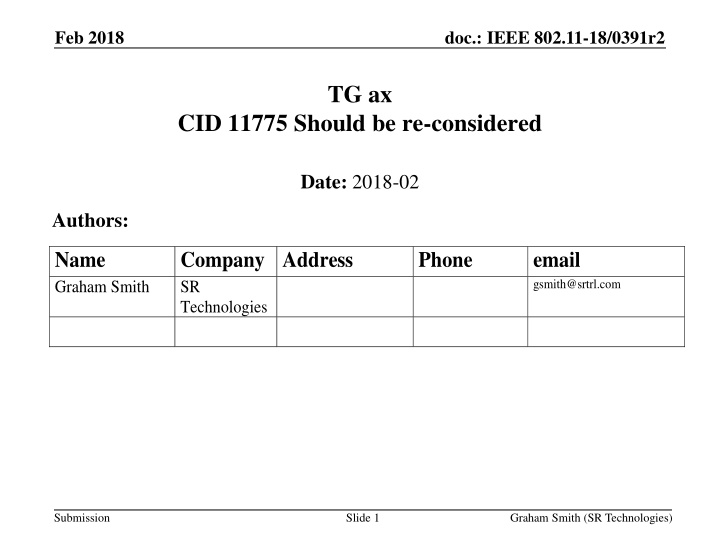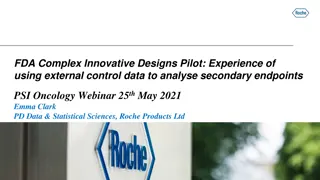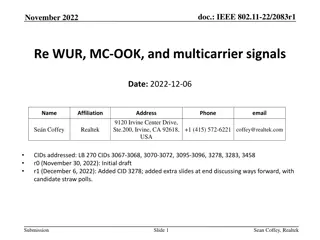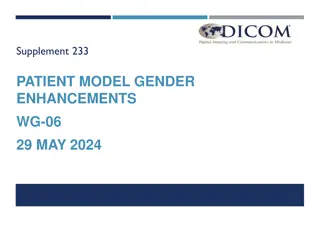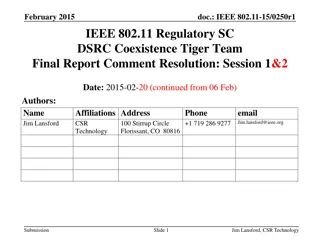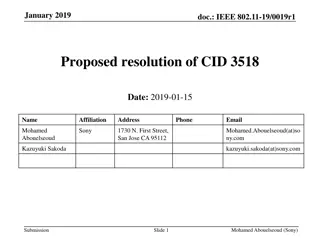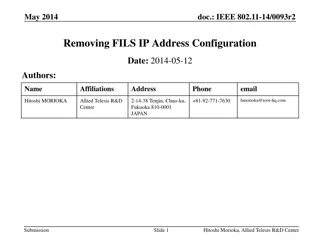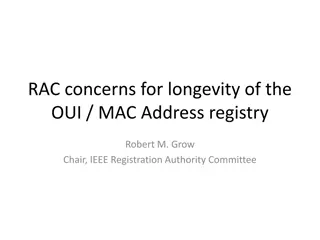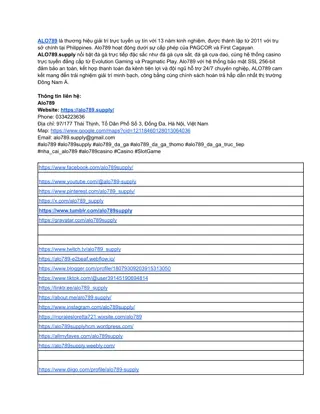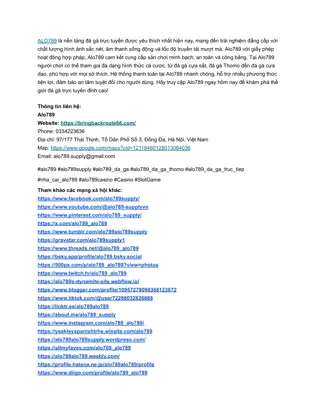TG ax CID 11775 Should be re-considered
This document, authored by Graham Smith from SR Technologies, urges a re-consideration of IEEE 802.11-18/0391r2TG.axCID.11775. The proposal provides insights and recommendations aimed at enhancing the existing standards. Smith's contact details are included for further communication.
Download Presentation

Please find below an Image/Link to download the presentation.
The content on the website is provided AS IS for your information and personal use only. It may not be sold, licensed, or shared on other websites without obtaining consent from the author.If you encounter any issues during the download, it is possible that the publisher has removed the file from their server.
You are allowed to download the files provided on this website for personal or commercial use, subject to the condition that they are used lawfully. All files are the property of their respective owners.
The content on the website is provided AS IS for your information and personal use only. It may not be sold, licensed, or shared on other websites without obtaining consent from the author.
E N D
Presentation Transcript
Feb 2018 doc.: IEEE 802.11-18/0391r2 TG ax CID 11775 Should be re-considered Date: 2018-02 Authors: Name Graham Smith Company Address SR Technologies Phone email gsmith@srtrl.com Submission Slide 1 Graham Smith (SR Technologies)
Feb 2018 doc.: IEEE 802.11-18/0391r2 Background CID 11775 Comment 27.9.2.2. Adjustment of OBSS_PD and transmit power. 17/0582 clearly shows problems with this method and in reality no-one would or should implement it. If they did they would soon switch it off. It sounds good that reducing the power makes you less of an interferer, but if you reduce the power, you reduce the SNIR of the wanted transmission, hence you decrease the MCS , you still have a good possibility of not being successful. Hence you slow down the network. How this is supposed to be an improvement for HE defeats me. In addition there are no rules for transmission other than reducing the power. 17/582 clearly shows that it can only work if a dynamic CCA threshold (DSC) is used but the lobby has refused to allow that. This is a bad feature as it stands and either should be deleted or the text in 17/1003 should be adopted which at least makes it work over a greater set of conditions. Submission Slide 2 Graham Smith (SR Technologies)
Feb 2018 doc.: IEEE 802.11-18/0391r2 What is behind the Comment? The commenter had spent much time analyzing the proposed SR scheme(s) using the 11ax use cases. The analyses show that implementing the power reduction scheme resulted in poor performance with good probability that the wanted transmission failed. This would result in lower MCSs, more retries, poorer performance and less efficiency. The analysis showed that what is necessary is to know when not to transmit because the transmissions chance of success is very low. Application of DSC has shown significant improvement. Submission Slide 3 Graham Smith (SR Technologies)
Feb 2018 doc.: IEEE 802.11-18/0391r2 Comment Reject reason Rejected Current OBSS_PD protocol does not describe how a STA chooses its TxPower and OBSS_PD level and leaves that to the implementer. This is comparable to MCS selection algorithms that are not described in the spec and left to the implementer. Doc 582 describes that if the STA uses a wrong proprietary solution to derive its OBSS_PD level and TxPower, performance can be bad. A similar presentation can be made to show that a wrong MCS selection algorithm can lead to bad performance. This does not prove that the mechanism is bad and that we need to specify the algorithm to select OBSS_PD and TxPower, similarly that we don t need to specify the MCS selection algorithms Let us look at each part of this rejection Submission Slide 4 Graham Smith (SR Technologies)
Feb 2018 doc.: IEEE 802.11-18/0391r2 Reject analysis Current OBSS_PD protocol does not describe how a STA chooses its TxPower and OBSS_PD level and leaves that to the implementer. That s a big problem. SR is all about transmit power and received power of interfering signals and desired signals. Simply allowing STAs to choose how they implement the SR function without specification of parameters controlling transmit power and thresholds for received power (interference and desired) seems foolish as SR will impact other STAs if not implemented with specified parameters. Having said that, the implementation used in 17/0582 is an obvious use or if not a probable use and 17/0582 shows that this is dangerous and predicts that no-one will perform SR at all. Submission Slide 5 Graham Smith (SR Technologies)
Feb 2018 doc.: IEEE 802.11-18/0391r2 Reject analysis This is comparable to MCS selection algorithms that are not described in the spec and left to the implementer Selection of a suitable MCS is by channel quality assessment and well understood. The required EVMs/SNIRs for various MCSs is defined. Choosing an MCS only effects the sending and receiving STA pair regarding the data rate and likelihood of reception, the interference to other STAs is basically independent of the choice of MCS. But, in the presence of an interferer, now the STA must choose its MCS then choose its TX PWR but this is now reduced so it must think again about the MCS? When the right decision may well be not to transmit in the first place such that high MCSs can predominate (that s what 11ax is supposed to be about). Submission Slide 6 Graham Smith (SR Technologies)
Feb 2018 doc.: IEEE 802.11-18/0391r2 Reject analysis Doc 582 describes that if the STA uses a wrong proprietary solution to derive its OBSS_PD level and TxPower, performance can be bad. A similar presentation can be made to show that a wrong MCS selection algorithm can lead to bad performance. 17/0582 applies the algorithm straightforwardly as presented in the spec. There is not much leeway on the -62, -82 dBm levels. The point being missed is that reducing the TX PWR is not a good idea and it should not have been introduced, let alone mandated. In addition TPC and legacy STAs does not mix. Wrong MCS selection on top of wrong decision on SR just complicates it more. Submission Slide 7 Graham Smith (SR Technologies)
Feb 2018 doc.: IEEE 802.11-18/0391r2 Reject analysis This does not prove that the mechanism is bad and that we need to specify the algorithm to select OBSS_PD and Tx Power, similarly that we don t need to specify the MCS selection algorithms We do need to specify SR algorithm see next slide Submission Slide 8 Graham Smith (SR Technologies)
Feb 2018 doc.: IEEE 802.11-18/0391r2 Spatial Reuse affects ALL STAs. It is no use one STA using different criteria to another STA. If so, then impossible to plan a deployment and a channel plan. Unless it is defined how each STA performs SR, IT WILL NOT WORK SR is all about transmit power and received power of interfering signals and desired signals. Hence simply allowing STAs to choose how they implement the SA function without specification of parameters controlling transmit power and thresholds for received power (interference and desired) seems foolish as SR will impact other STAs if not implemented with specified parameters. Choosing an MCS however only effects the sending and receiving STA pair regarding the data rate and likelihood of reception, the interference to other STAs is basically independent of the choice of MCS. Therefore it is in the best interest of the STA to get the MCS right. But, for SR it typically will not be in the best interest of an individual STA to get back-off or transmit power correct, as it would almost always benefit the STA to transmit at higher power over weaker transmissions of other STAs. Hence the need for specification to insure SR is used fairly and that the impact to other STAs and the overall WLAN is minimized. Submission Slide 9 Graham Smith (SR Technologies)
Feb 2018 doc.: IEEE 802.11-18/0391r2 Conclusions Comment CID 11775 was rejected with flawed reasoning. SR is widely seen as an immature part of the 11ax Spec and we need to get it better Submission Slide 10 Graham Smith (SR Technologies)
Feb 2018 doc.: IEEE 802.11-18/0391r2 References 13/1012 Dynamic Sensitivity Control 13/1290 Dynamic Sensitivity Control for HEW 13/1487 Dense apartment Complex Capacity improvements with Channel Selection and DSC 13/1489 Airport Capacity Analysis 14/0045 E Education Analysis 14/0058 Pico Cell Use Case analysis 14/0294 DSC Channel Selection and Legacy Sharing 14/0365 DSC Implementation 14/0523 MAC simulation results for DSC and TPC 14/2014 DSC Implementation 14/0779 DSC Practical Usage 15/0025 DSC and Roaming 15/0027 Simulation based evaluation of DSC in residential scenario 15/0548 Enterprise Scenario and DSC 15/0804 Outdoor Enterprise Scenario and DSC 15/0807 DSC Summary 16/0121 Adjustment of sensitivity and or CCA 16/0212 Enterprise Scenario DSC and Color 16/0350 Enterprise Scenario TPC and DSC 16/0597 Indoor Enterprise Scenarios Color, DSC and TPC 16/0604 Simulation Based evaluation of DSC in enterprise scenario 16/1064 Unified SR approach DSC, ATPC and Inter-BSS 16/1567 Proposal for DSC, ATPC Inter-BSS with responses to comments 17/0163 DSC as OBSS_PD 17/1063 Unified SR Text DSC ATPC Inter-BSS 17/0582 OBSS_PD/TPC Examined 17/1003 DSC CCAT OBSS_PD Resolve SR comments Submission Slide 11 Graham Smith (SR Technologies)
Feb 2018 doc.: IEEE 802.11-18/0391r2 Motion A The TG ax amendment should include specification(s) to insure that SR is used fairly and consistently. Proposed: Graham Smith Seconded: Y N A Submission Slide 12 Graham Smith (SR Technologies)
Feb 2018 doc.: IEEE 802.11-18/0391r2 Motion B CID 11775 should be re-considered Proposed: Graham Smith Seconded: Y N A Submission Slide 13 Graham Smith (SR Technologies)
